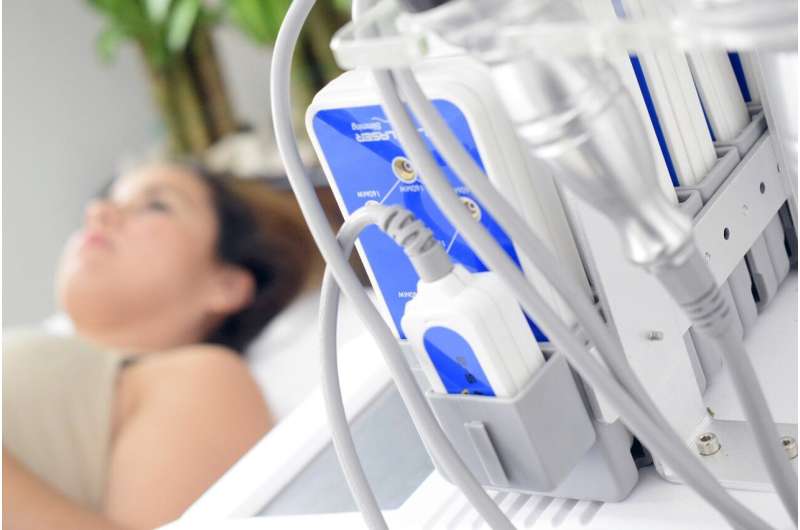Credit: CC0 Public Domain
Melbourne researchers have developed a new way to pinpoint which breast cancers will respond to a new class of anti-cancer agents called Smac-mimetics.
The research team discovered a 'gene signature' in human breast cancer samples that predicted whether they would be killed by Smac-mimetics including a drug called birinapant, which has entered phase 2 clinical trials for certain cancers. "Triple negative' breast cancers were especially likely to respond to Smac-mimetics. This suggests that these agents might be a potential new line of therapy for triple negative breast cancers, as well as other cancers that carry the responsive gene signature.
The pre-clinical research, published in Cell Death & Differentiation, was led by Walter and Eliza Hall Institute researchers Dr. Najoua Lalaoui, Professor John Silke, Professor Jane Visvader and Professor Geoff Lindeman. Professor Lindeman is also a medical oncologist at the Peter MacCallum Cancer Centre.
Pinpointing susceptible cancers
Smac-mimetics are targeted therapies which mimic a naturally occurring protein that drives cells to die. Some Smac-mimetics, including the drug birinapant, have entered clinical trials as potential new anti-cancer therapies, said Dr. Lalaoui.
"Unfortunately there is still some uncertainty as to which cancers will respond to Smac-mimetics," she said. "While birinapant appears to be a safe therapy for cancer patients and has entered phase 2 clinical trials, it has been hard to predict which patients will respond to this drug."
"We were interested in whether human breast cancers were responsive to Smac-mimetics, and discovered that these drugs were particularly effective in killing 'triple negative' breast cancers—as well as some breast cancers that express the estrogen receptor."
"Triple negative' breast cancers account for around 15 percent of breast cancers in Australia. Unlike other breast cancers, there are few effective targeted therapies for triple negative breast cancers and patients are treated with chemotherapy, which is associated with toxicity and side-effects.
"We wanted to understand why some breast cancers—particularly those that were triple negative—were more sensitive to Smac-mimetics. To do this we worked with a bioinformatics team led by Professor Gordon Smyth to look for whether there was a pattern in which genes were turned on or off in sensitive—but not resistant—breast cancers," Dr. Lalaoui said.
The team discovered there was indeed such a 'gene signature' that predicted which samples would respond to Smac-mimetics—and it was more commonly found in triple negative breast cancers.
"Looking at the particular genes that were expressed in the gene signature has also given us clues about why these cancers were sensitive to Smac-mimetics," Dr. Lalaoui said.
Opportunities for clinical trials
The discovery that triple negative breast cancers—and other breast cancers with the gene signature—were sensitive to Smac-mimetics suggests that this would be an ideal type of cancer to enter clinical trials of Smac-mimetics, Professor Lindeman said.
"Better treatment options are urgently needed for women with relapsed triple negative breast cancer, and it would be great to see clinical trials of Smac-mimetics aimed at treating this clinically aggressive form of breast cancer," he said.
Dr. Lalaoui said that the identification of a gene signature predicting sensitivity to Smac-mimetics might also benefit other cancer patients.
"If other cancers have the 'sensitive' gene signature, we would predict they would be the most likely to respond to Smac-mimetics in clinical trials. This is certainly an area we would like to look at further," she said.
More information: Najoua Lalaoui et al. Targeting triple-negative breast cancers with the Smac-mimetic birinapant, Cell Death & Differentiation (2020). DOI: 10.1038/s41418-020-0541-0
























